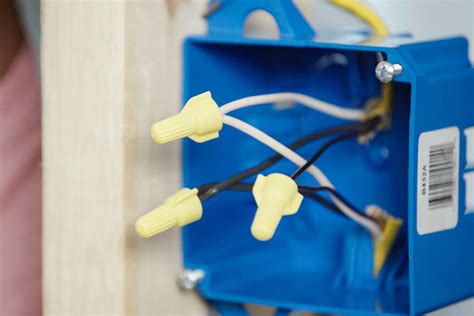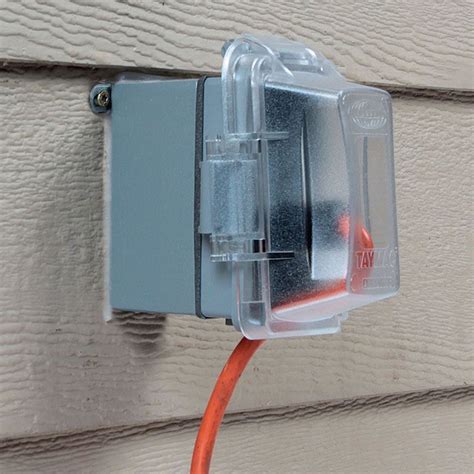can i use silicone to waterproof my electrical junction box Yes, that's right: the standard outdoor/weatherproof electrical enclosures in use in the US are not intended to be sealed against water ingress. In fact, the NEC contains an explicit allowance (in 314.15) for drain holes in .
Learn how to visually identify the types of cutting tools most commonly used in CNC milling operations and how those tools are used in everyday milling processes. Students are introduced to tools for milling and hole making operations, and common tool holder configurations.
0 · sealing electrical junction boxes
1 · sealant for outside electrical box
2 · how to use silicone for electrical connections
3 · can you use silicone for waterproofing
4 · can you use silicone for electrical
5 · can you use acetoxy silicone
6 · can silicone waterproof electrical connections
7 · can silicone seal electrical connections
We need junction boxes for garden lights, outdoor fixtures, and security lighting. These junction boxes remain efficient and dependable regardless of weather fluctuations like heavy rain and hot temperatures.

Don't use silicon sealant. There is a silicon gel that can be purchased, for use mostly outside. Fill the JB completely with the gel, much easier to remove when necessary. You can also purchase a silicon spray grease. Spray the terminal blocks until completely covered. Can You Use Silicone to Waterproof Electrical Connections? Yes, you can. While silicone is an effective waterproofing material for el. connections, it should not be used as a permanent solution because the connection may . If existing construction in a wall, I'd still foam it as best I could "through" the box and then touch up with silicone inside the box and around the exposed edges. If outside of a wall . The only thing I’d do differently is to use red silicone fire-rated caulk (it’s sold for use on flue pipes and the like). If you have any boxes you can access from behind, you can use the orange fire stop spray foam.
Silicone sealant is a sealant that can be used to waterproof electrical connections. PVC conduit is a type of plastic pipe that is used to protect electrical cables from damage. .

Yes, that's right: the standard outdoor/weatherproof electrical enclosures in use in the US are not intended to be sealed against water ingress. In fact, the NEC contains an explicit allowance (in 314.15) for drain holes in . 6) Can you use silicone to waterproof electrical connections? Generally, no you cannot. Silicone is not recommended unless it is supplied by the manufacturer for exactly that purpose.
Use the techniques below to waterproof your connections. Creating a tight and durable seal, silicone is a flexible material suited for protecting electrical cables whether outdoors or indoors. After waterproofing wire . Don't use silicon sealant. There is a silicon gel that can be purchased, for use mostly outside. Fill the JB completely with the gel, much easier to remove when necessary. You can also purchase a silicon spray grease. Spray the terminal blocks until completely covered. Can You Use Silicone to Waterproof Electrical Connections? Yes, you can. While silicone is an effective waterproofing material for el. connections, it should not be used as a permanent solution because the connection may become distorted over time. If existing construction in a wall, I'd still foam it as best I could "through" the box and then touch up with silicone inside the box and around the exposed edges. If outside of a wall or on a post, I'd box it with treated material, foam between the boxing and electrical box then silicone.
sealing electrical junction boxes
The only thing I’d do differently is to use red silicone fire-rated caulk (it’s sold for use on flue pipes and the like). If you have any boxes you can access from behind, you can use the orange fire stop spray foam. Silicone sealant is a sealant that can be used to waterproof electrical connections. PVC conduit is a type of plastic pipe that is used to protect electrical cables from damage. Grommets are rubber or plastic rings that are used to protect electrical cables from sharp edges. Yes, that's right: the standard outdoor/weatherproof electrical enclosures in use in the US are not intended to be sealed against water ingress. In fact, the NEC contains an explicit allowance (in 314.15) for drain holes in the bottom of boxes.
You can seal the outside of conduit with closed cell expanding foam (as you suggest) or silicone caulking. You can seal the inside of the conduit with silicone caulking or duct seal putty (as you suggest). 6) Can you use silicone to waterproof electrical connections? Generally, no you cannot. Silicone is not recommended unless it is supplied by the manufacturer for exactly that purpose. Use the techniques below to waterproof your connections. Creating a tight and durable seal, silicone is a flexible material suited for protecting electrical cables whether outdoors or indoors. After waterproofing wire connectors with silicone, you’ll still be able to move or rearrange wires later. As the SER cable is non-round, I would regularly use a dab of RTV Silicone gasket compound (The stuff I used was "Blue Maxx") to make sure there was a good seal. PVC conduit has been recommended, and while I agree it is generally a good choice for mechanical cable protection, you need to make sure that it is well sealed in weather areas .
Don't use silicon sealant. There is a silicon gel that can be purchased, for use mostly outside. Fill the JB completely with the gel, much easier to remove when necessary. You can also purchase a silicon spray grease. Spray the terminal blocks until completely covered.
Can You Use Silicone to Waterproof Electrical Connections? Yes, you can. While silicone is an effective waterproofing material for el. connections, it should not be used as a permanent solution because the connection may become distorted over time.
If existing construction in a wall, I'd still foam it as best I could "through" the box and then touch up with silicone inside the box and around the exposed edges. If outside of a wall or on a post, I'd box it with treated material, foam between the boxing and electrical box then silicone. The only thing I’d do differently is to use red silicone fire-rated caulk (it’s sold for use on flue pipes and the like). If you have any boxes you can access from behind, you can use the orange fire stop spray foam.
building metal box for liquid
Silicone sealant is a sealant that can be used to waterproof electrical connections. PVC conduit is a type of plastic pipe that is used to protect electrical cables from damage. Grommets are rubber or plastic rings that are used to protect electrical cables from sharp edges. Yes, that's right: the standard outdoor/weatherproof electrical enclosures in use in the US are not intended to be sealed against water ingress. In fact, the NEC contains an explicit allowance (in 314.15) for drain holes in the bottom of boxes. You can seal the outside of conduit with closed cell expanding foam (as you suggest) or silicone caulking. You can seal the inside of the conduit with silicone caulking or duct seal putty (as you suggest).
building a metal frame house
6) Can you use silicone to waterproof electrical connections? Generally, no you cannot. Silicone is not recommended unless it is supplied by the manufacturer for exactly that purpose. Use the techniques below to waterproof your connections. Creating a tight and durable seal, silicone is a flexible material suited for protecting electrical cables whether outdoors or indoors. After waterproofing wire connectors with silicone, you’ll still be able to move or rearrange wires later.
sealant for outside electrical box
how to use silicone for electrical connections
Among the different types available, the BMT (Base Mount Turret), VDI (Verein Deutscher Ingenieure) Turret, and BOT (Bolt-On Turret) are widely used and offer distinct advantages. In this article, we will delve into each of these CNC lathe turrets and explore their features, benefits, and applications.
can i use silicone to waterproof my electrical junction box|can you use acetoxy silicone